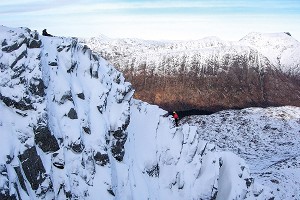
In this piece UKC Chief Editor Jack Geldard offers ten simple tips to think about if climbing Scottish V is one of your goals.
Also on UKC is the related article: Ten Top Tips for Winter Climbing
1: Climb grade IV. A lot.
It may sound obvious, but gaining valuable experience on easier routes will spur you on to your goal of climbing grade V. Working your way up through the grades until you have a brace of grade IV climbs under your belt means you will have built up experience and judgements that no amount of general fitness training can give you. This is the most important tip for pushing your grade. Experience counts.
The bonus of building your grade pyramid, is that you will have a great time doing countless brilliant routes of grade III and IV before you move on to grade V. If you are looking for some inspiration on classic routes in the grade III / IV bracket then check out this article by Dan Bailey - Scottish Winter: Ten Must-do Routes at II and III (Nb. If it's IVs your after, he's sneaked a couple in there).
2: Go on holiday to Scotland
Forget two weeks in Ibiza with the family, what we are talking about is two weeks in Aviemore in February with your mate Dave. Climbing on occasional weekends is great, but if you want to really feel on a roll, get your systems organised, and build fitness, experience and confidence, then a sustained block of climbing is the way forward. Whilst on a climbing trip you can focus 100% and all other considerations are left behind at the office. Every night is spent drying kit, reading guide books, drinking ale, and generally getting psyched. Maybe go easy on the ale.
3: Not all grade Vs are grade V.
Winter climbing in the UK, be it Scotland, Wales or England is fickle. The conditions are ever changing, the ice is usually melting, the wind is always howling. If you arrive at your chosen objective, only to find the ice terrifyingly thin or more like a stream than an icefall, then pushing your grade in less than ideal conditions is a recipe for disaster.

Here professional climber and coach Neil Gresham gives us his tips on breaking the big 'V' barrier:
If you're aiming to climb grade V in Scotland then it's all about aerobic capacity and leg fitness. Put simply, the climbing itself isn't that hard, but you need to arrive at the base feeling fresh. If you're going for continental water ice 5 then it's much more about forearm stamina and shoulder & triceps endurance. Don't worry about pull-ups, run endless laps on steep juggy routes at the wall and do bucket-loads of press-ups in between. Of course tools and screws are really important for water ice. Keep your picks razor sharp and it should go without saying that you should be climbing leashless. If you're worried about dropping a tool then use lanyards. A spanking new set of sharp screws will make a WI 5 feel like a 4, whereas an old set of blunt ones can make a 4 feel like a 6!
4: Get Fit, Not Knackered.
If you are arriving at the base of your chosen route after a two hour slog, feeling like you need to go and have a heart bypass or maybe a new pair of lungs, then your general mountain fitness could probably do with some work. Arriving at the crag knackered, sweaty and feeling like you are about to puke is not going to set you up physically or mentally for your hardest lead.
How can you train for this? Well running, big mountain days out, and general cardio work are not going to do any harm. If you can't get out to the big hills all the time, maybe you can get out and do some night runs in poor weather? Personally I try and avoid the gym as much as I can, and like to go outside and get wet. If you can't get out and the gym or climbing wall is your only option, make sure you take Neil gresham's advice in the box on the right.
5: Use the best gear you can afford.
Yes, yes yes. Grade Vs were climbed with one axe, no front points, a frying pan on your head, etc etc. We've heard it before, and we agree that the climbers of the past were inspirational. However we don't drive to work on a horse and cart, and with modern equipment and clothing winter climbing is a whole different ball game, and mainly it is a warmer and dryer experience! I think it is fair to say that most of the guys pushing the limits back then would have jumped at the chance to have a pair of modern tools or gloves at their disposal.
The things I think are the most important to get right are gloves and axes and if you can get hold of a belay jacket then all the better.
Some dextrous, waterproof gloves really do make a huge difference to your comfort and enjoyment, but also, if you have warm hands, and can actually feel your ice tools, then you are part way there in not getting pumped, and not getting scared, and actually getting up your route! In my last winter tips article I gave more advice on a variety of things of this ilk.
- You can check it out here: UKC ARTICLE: Ten Top Tips for Winter Climbing
6: Get psyched and stay psyched.
One of the best ways to get psyched is to buy a guidebook for an area you want to visit. Be that Scotland, or even further afield like Norway or Chamonix. I've spent literally hundreds of hours of my life pouring over guidebooks, topos and maps of mountainous areas of the world.
But for longterm psyche you can't beat a good climbing partner. If you are miles away from the mountains, then a good partner for regular trips to the climbing wall, and regular holidays or weekends away can do wonders for your psyche. Plan some team goals, some big routes that you both want to tick (make sure your mate leads the hard pitches!) and pencil in some dates for a mission or two. Planning makes those winter nights zom by, and gives you something to aim and train for.
7: Be prepared to dig for gear.
This may sound a bit odd, but I think it is good advice. On many easier routes, often following snow gullies or easy angled ice/neve, then gear is sometimes sparse, but this is offset by the terrain being quite easy to climb and the likelyhood of a fall being low. Of course placing gear is generally a good idea on all grades of climb, but especially so when the climbing starts to get tough. Is that a steepening just up ahead? Better get some gear in. Clear out those cracks and place some rock gear, or search out some good ice and place a screw (or two!). Romping away up easy ground without putting lots of gear in can save time of course, but when the going gets tough you want to have gear you can trust where possible. Finding gear isn't always the easiest thing to do in Scotland in the winter, but with experience comes the ability to 'guess' where cracks and weaknesses are likely to be (experience being the number 1 tip!).
Climbing grade V (for most people) is quite different to soloing grade I and II gullies. Building good belays and digging for gear are all part of the challenge.
8: Learn how to place ice screws one handed
Grade V Ice gullies are steep enough and pumpy enough to mean that you often need to hang on to one axe when placing an ice screw. This isn't quite as easy as it sounds, but to be confident on steep ice, you need to make sure this skill is well honed and almost second nature.
Have good sharp screws and know how to use them.
Here's a good video from Arc'teryx with some useful advice:
9: UKC Winter Conditions Page
We've touched on it already; that finding routes in good condition is likely to make your first grade Vs easier and safer, but how do you do that? One way is with the handy UKC Winter Conditions Page. This page compiles all the recent winter ticks in the UKC logbooks, and often people leave comments on conditions of routes. Check the page, check some winter climbing blogs, check the weather and then strike whilst the iron is cold and snowy!
10: Grow a beard.
Well it seems to have worked for Andy Nisbet!
- SKILLS: Building Fast Belays When Multipitch Sport Climbing 9 Nov, 2016
- SKILLS: Abseil Knots Explained 2 Oct, 2016
- FEATURE: Colm Shannon's Deserted DWS Heaven - Irish West Coast 7 Aug, 2016
- SKILLS: Acclimatising for the European Alps 5 Jun, 2016
- Terra Unfirma! Adventures on the Lleyn Peninsula 1 Jun, 2016
- VIDEO: Fiesta De Los Biceps 8 May, 2016
- REVIEW: Evolv Shaman 2016 18 Mar, 2016
- REVIEW: Doug Scott - Up and About 2 Feb, 2016
- ARTICLE: 12 Climbing Adventures That Won't Break The Bank 26 Jan, 2016
- DESTINATION GUIDE: 10 Routes to Climb in Chamonix in Winter 20 Jan, 2016




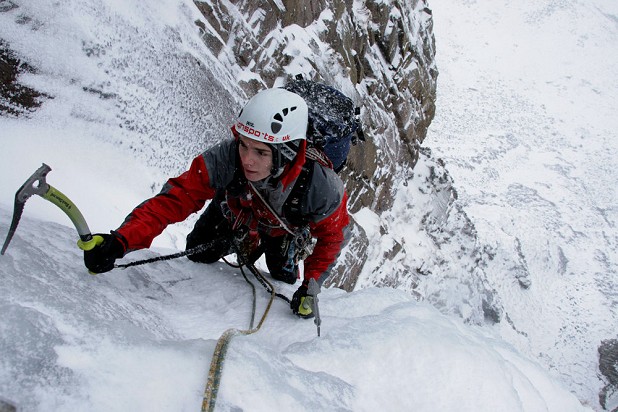
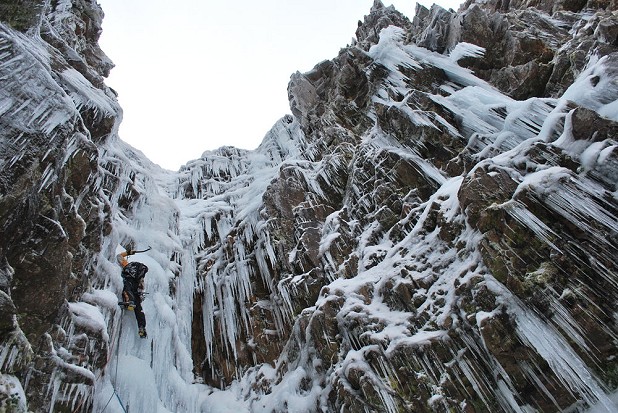
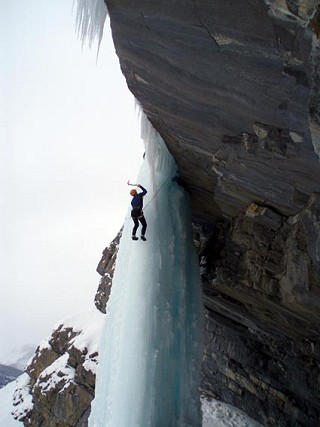
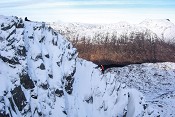
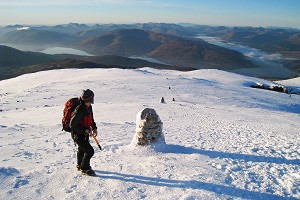
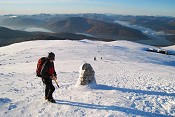
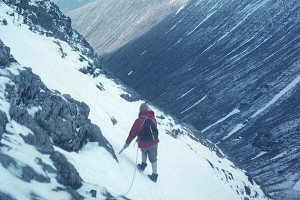
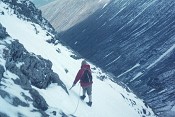








Comments